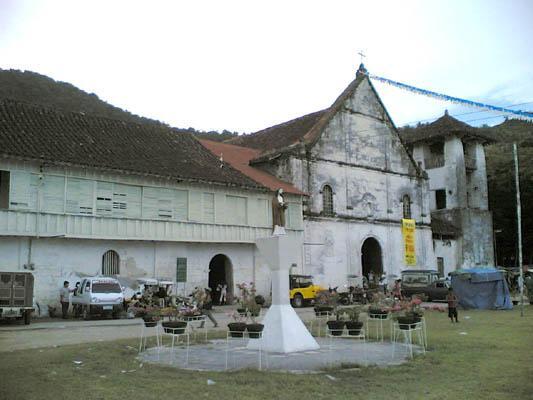Patrocinio de Maria Church, Boljoon

The church of Boljoon is the oldest remaining original stone church in Cebu and is relatively well-preserved. It was declared for conservation and restoration in 1998.
The style of the church is pseudo-baroque-rococo. The designer has seemingly followed the same pattern in the churches of Argao and Dalaguete with the exception of some Rococo decorations on the panels and along shallow pillars. It has the appearance of an impressionist painting ?a la Greco?, with its elongated shape.
The church of Boljoon was founded during 1599 under the administration of the Church of Carcar. On October 31, 1690 Boljoon was made an independent parish. On September 27, 1737 the convent was abandoned due to lack of priests and was consequently handed by the Augustinians to the Jesuits In 1747 Boljoon was returned to the Augustinians in exchange for Liloan, Cotcot and Maraling. The Church of Patrocinio in Boljoon has recently celebrated its 400th anniversary since its establishment in 1599.
The Church of Patrocinio de Maria in Boljoon is a genuine showcase of old and complicated carvings and adornments. The Spanish churchyard beside it is still present up to this day. Its has one of the most unusual tower because aside from being Islamic in character, it looks more like a fortress. Its has a rectangular belfry, built in 1701 and is still present up to now. The tower has four windows where the cannons were shown to defend against Muslim pirates. It was said that the sound of its silver bells supposedly reached Oslob and Alcoy (southern most town of cebu), but in 1802, they were stolen by Muslim pirates led by Datu Orendain. Because of their weight, the Moro vinta allegedly sunk. The bell was never recovered. Fray Antonio Maglano, OSA, was the warrior-priest who led the Boljoon militiamen.
The interior is beautifully decorated. It has a main nave and transept and has twenty-eight pillars, two meters thick and made of mortar and lime, which support the walls as thick as the pillars. There used to be a communion rail with ornate silverwork but it was never recovered after it was looted.
